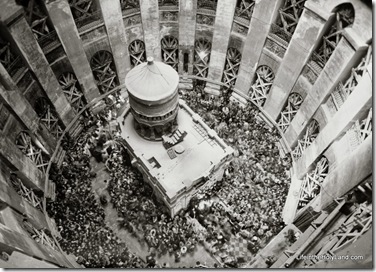The Turkish government is building a 10-foot high wall around a cemetery along the eastern wall of the Old City of Jerusalem, according to signs posted there. The municipality has confirmed the report.
John the Baptist’s bones have been found in a monastery on a Bulgarian island in the Black Sea, according to government officials. They have everything to prove the identification except for evidence.
Extracts of the Cyrus Cylinder have been found in China carved on horse bones. The question is when the copies were made.
The French will finance a “national museum” in Bethlehem and train museographers, in a one million dollar deal signed recently. Construction is scheduled to be completed in 2012.
The Jewish Tribune has a story on the woman who discovered the Jerusalem cuneiform tablet.
Contrary to what I wrote before, the tablet was actually discovered during sifting in March. I mixed up a couple of different unannounced sensational discoveries.
Raphael Golb, accused of impersonating Dead Sea Scrolls scholars, has rejected a plea offer in Manhattan Criminal Court. For background, see here.
HT: Joe Lauer
